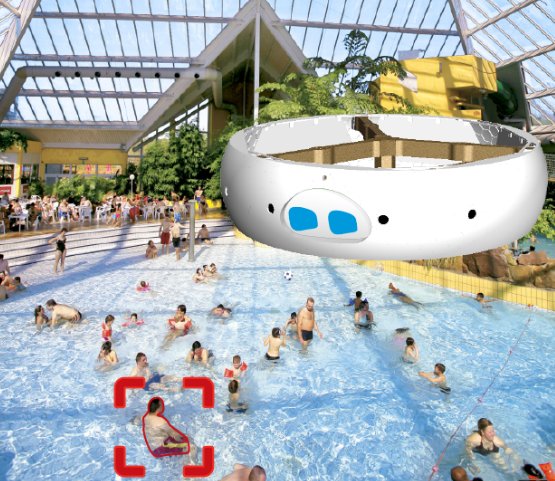
Drone saves swimmers in danger
When a group of swimmers on the Spanish coast near Valencia got into trouble because of an undercurrent, they were saved by a drone. The device localised the swimmers, transmitted images to the lifeguards, and lowered two life vests into the water to keep the most exhausted swimmers safe until the rescue team arrived on a jet ski.
The incident took place on a beach near Sagunto, a seaside resort north of Valencia, on Wednesday, 15 August, according to a report on the drone website sUAS News. The swimmers were 70 metres from the beach when a strong undercurrent started pulling them further and further out to sea.
The swimmers managed to attract the attention of the lifeguard, who sounded the alarm. He immediately deployed a special piece of equipment on the beach: a rescue drone. The operator managed to get it to the location of the swimmers within a minute.
Life jacket
Live video streaming from the drone clearly showed the operator that one woman was in trouble, so one of the two life jackets on board was lowered into the sea next to her.
The lifeguard appeared soon after on a jet ski, which he used to bring the swimmers safely back to dry land where a medical team was on hand to check them.
Video footage of the rescue operation has been released and shows that the seabed where the swimmers were varies in height. There must be a sandbank or piece of rock jutting out which can be used to stand on. Perhaps this formation is responsible for unusually treacherous currents.
New tools
A drone is a very new piece of equipment for lifeguards. Its most important function is to show the situation, something the lifeguard used to use his binoculars for. By hovering over the person in trouble and sending coordinates, the drone also shows the lifeguard or the rescue team where they have to head to.
The Auxdron Lifeguard Drone used in this rescue was developed by two Spanish lifeguards. One obvious advantage of using a drone to deliver lifejackets is the lightning speed with which it can get to where it needs to be, and response time is a crucial factor for preventing deaths from drowning.
Treacherous sea
The reason that the Spanish drone is on standby in Sagunto is the highly treacherous nature of the sea for swimmers. According to a local newspaper, 67 people drowned in the Valencia region in 2017 (Spanish only) – an increase of over 70% in three years.
 In the Netherlands, students from Eindhoven University of Technology developed a drone that recognises an imminent drowning in a swimming pool, hopefully still in time to take action (see the image on the right, or for more, see: ‘Drone saves child in swimming pool'). An additional feature of this design is image recognition. This drone can analyse video images of a swimming pool full of people, and identify which person is in trouble.
In the Netherlands, students from Eindhoven University of Technology developed a drone that recognises an imminent drowning in a swimming pool, hopefully still in time to take action (see the image on the right, or for more, see: ‘Drone saves child in swimming pool'). An additional feature of this design is image recognition. This drone can analyse video images of a swimming pool full of people, and identify which person is in trouble.
Opening photo and video: General Drones






